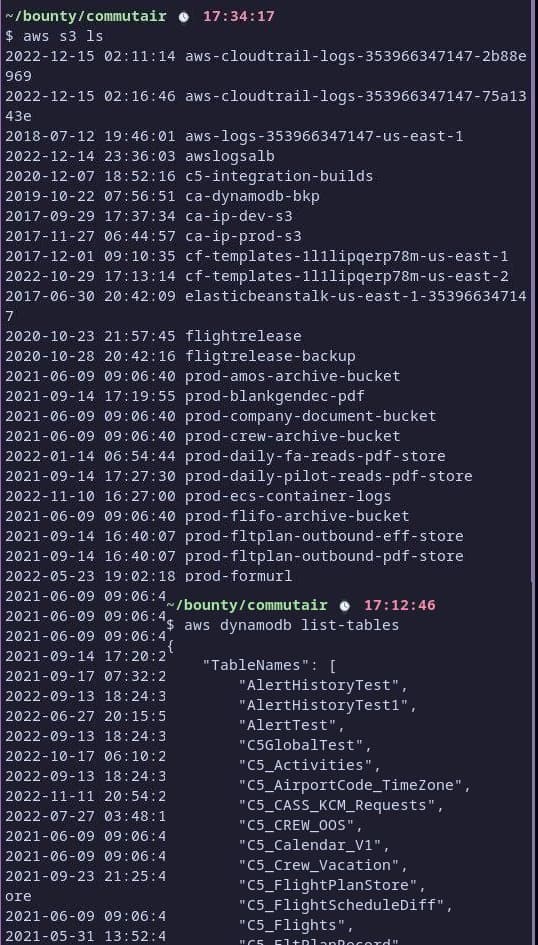We recently wrote about Cory Doctorow’s great article on how the “enshittification” of social media (mainly Facebook and Twitter) was helping to lower the “switching costs” for people to try something new. In something of a follow up-piece on his Pluralistic site, Doctorow explores the process through which basically all large companies eventually hit the “enshittification” stage, and it’s (1) super insightful (2) really useful to think about, and (3) fit with a bunch of other ideas I’ve been thinking about of late. The opening paragraph is one for the ages:
Here is how platforms die: first, they are good to their users; then they abuse their users to make things better for their business customers; finally, they abuse those business customers to claw back all the value for themselves. Then, they die.
He provides a lot more details about this process. In the beginning, companies need users and become successful by catering to their needs:
When a platform starts, it needs users, so it makes itself valuable to users. Think of Amazon: for many years, it operated at a loss, using its access to the capital markets to subsidize everything you bought. It sold goods below cost and shipped them below cost. It operated a clean and useful search. If you searched for a product, Amazon tried its damndest to put it at the top of the search results.
And, especially in the venture-backed world, this is often easier to do, because there isn’t much of a demand for profits (sometimes even for revenue), as the focus is on user growth. So, companies take all that VC cash and use it to subsidize things, and… that’s often really great for consumers.
But, eventually, these companies have to pay back the VCs in the form of selling out to a bigger company or, preferably, through a big IPO, taking the company public, giving it access to the public equity markets, and… then being at the whims of Wall Street. This is the part that Cory doesn’t mention in his piece, but which I’ve been thinking quite a lot about lately, and I do think is an important piece to the puzzle.
Once you go public, and you have that quarterly drumbeat from Wall Street where pretty much all that matters is revenue and profit growth. Indeed, it’s long forgotten now, but Jeff Bezos and Amazon actually were a rare company that kind of bucked that trend, and for a while at least, told Wall Street not to expect such things, as it was going to invest more and more deeply in serving its customers, and Wall Street punished Bezos for it. It’s long forgotten now, but Wall Street absolutely hated Amazon Prime, which locked in customer loyalty, but which they thought was a huge waste of money. The same was true of Amazon Web Services, which has become a huge revenue driver for the company.
But Wall Street is not visionary. Wall Street does not believe in long term strategy. It believes in hitting your short term ever increasing numbers every three months. Or it will punish you.
And this, quite frequently, leads to the process that Cory lays out in his enshittification gravity well. Because once you’ve gone public, even if you have executives who still want to focus on pleasing users and customers, eventually any public company is also going to have other executives, often with Wall Street experience, who talk about the importance of keeping Wall Street happy. They’ll often quote Milton Friedman’s dumbest idea: that the only fiduciary duty company executives have is to increase their profits for shareholders.
But one of the major problems with this that I’ve discussed for years is that even if you believe (ridiculously) that your only goal is to increase profits for shareholders, that leaves out one very important variable: over what time frame?
This goes back to something I wrote more than 15 years ago, talking about Craigslist. At the time, Craigslist was almost certainly the most successful company in the world in terms of profits per employee. It was making boatloads of cash with like a dozen employees. But the company’s CEO (who was not Craig, by the way) had mentioned that the company wasn’t focused on “maximizing revenue.” After all, most of Craigslist is actually free. There are only a few categories that charge, and they tend to be the most commercial ones (job postings). And this resulted in some arguing that the company lacked a capitalist instinct, and somehow this was horrible.
But, as I wrote at the time, this left out the variable of time. Because maximizing revenue in the short term (i.e., in the 3 month window that Wall Street requires) often means sacrificing long term sustainability and long term profits. That’s because if you’re only looking at the next quarter (or, perhaps, the next two to four quarters if we’re being generous) then you’re going to be tempted to squeeze more of the value out of your customers, to “maximize revenue” or “maximize profits for shareholders.”
In Cory’s formulation, then, this takes us to stage two of the enshittification process: abusing your users to make things better for your business customers. That’s because “Wall Street” and the whole “fiduciary duty to your shareholders” argues that if you’re not squeezing your customers for more value — or more “average revenue per user” (ARPU) — then you’re somehow not living up to your fiduciary duty. But that ignores that doing so often sucks for your customers, and it opens a window for them to look elsewhere and go there. If that’s a realistic option, of course.
Of course, many companies hang on through this stage, partly through inertia, but also frequently through the lack of as comprehensive a competitive ecosystem. And, eventually, they’ve reached a kind of limit in how much they’ve abused their users to please their business customers which, in turn, allows them to please Wall Street and its short-term focus.
So that brings us to Cory’s stage three of the enshittification. In which they start seeking to capture all of the value.
For years, Tim O’Reilly has (correctly) argued that good companies should “create more value than they capture.” The idea here is pretty straightforward: if you have a surplus, and you share more of it with others (users and partners) that’s actually better for your long term viability, as there’s more and more of a reason for those users, partners, customers, etc. to keep doing business with you. Indeed, in that link above (from a decade ago), O’Reilly provides an example that could have come straight out of Cory’s enshittification essay:
“Consider Microsoft,” O’Reilly told MIT researcher Andrew McAfee during an interview at SXSWi, “whose vision of a computer on every desk and in every home changed the world of computing forever and created a rich ecosystem for developers. As Microsoft’s growth stalled, they gradually consumed more and more of the opportunity for them- selves, and innovators moved elsewhere, to the Internet.”
And this is what happens. At some point, after abusing your users to please your business goals, you hit some fairly natural limits.
But Wall Street and the Friedman doctrine never stop screaming for more. You must “maximize” your profits for shareholders in that short term window, even if it means you’re going to destroy your shareholders in the long term. And thus, you see any excess value as “money left on the table,” or money that you need to take.
The legacy copyright industry is the classic example of this. We’ve provided plenty of examples over they years, but back when the record labels were struggling to figure out how to adapt to the internet, every few years some new solution came along, like music-based video games (e.g., Guitar Hero), and they’d be crazy successful, and make everyone lots of money… and then the old record label execs would come in and scream about how they should be getting all that money, eventually killing the golden goose that was suddenly giving them all this free money for doing nothing.
And, thus, that last leg of the enshittification curve tends to be when these legacy industries refuse to play nice with the wider ecosystem (often the ones enabling your overall business to grow) and seek to capture all the value for themselves, without realizing that this is how companies die.
Of course, one recent example of this is Elon killing off third party Twitter apps. While no one has officially admitted to it, basically everyone is saying it’s because those apps didn’t show ads to users, and Elon is so desperate for ad revenue, he figured he should kill off those apps to “force” users onto his enshittified apps instead.
But, of course, all it’s really doing is driving not just many of the Twitter power users away, but also shutting down the developers who were actually doing more to make Twitter even more useful. In trying to grab more of the pie, Elon is closing off the ability to grow the pie much bigger.
This is one of the reasons that both Cory and I keep talking about the importance of interoperability. It not only allows users to break out of silos where this is happening, but it helps combat the enshittification process. It forces companies to remain focused on providing value and surplus, to their users, rather than chasing Wall Street’s latest demands.
The temptation to enshittify is magnified by the blocks on interoperability: when Twitter bans interoperable clients, nerfs its APIs, and periodically terrorizes its users by suspending them for including their Mastodon handles in their bios, it makes it harder to leave Twitter, and thus increases the amount of enshittification users can be force-fed without risking their departure.
But, as he notes, this strategy only works for so long:
An enshittification strategy only succeeds if it is pursued in measured amounts. Even the most locked-in user eventually reaches a breaking-point and walks away. The villagers of Anatevka in Fiddler on the Roof tolerated the cossacks’ violent raids and pogroms for years, until they didn’t, and fled to Krakow, New York and Chicago…
There are ways around this, but it’s not easy. Cory and I push for interoperability (including adversarial interoperability) because we know in the long run it actually makes things better for users, and creates incentives for companies and services not to treat their users as an endless piggybank that can be abused at will. Cory frames it as a “freedom to exit.”
And policymakers should focus on freedom of exit – the right to leave a sinking platform while continuing to stay connected to the communities that you left behind, enjoying the media and apps you bought, and preserving the data you created
But, there’s more that can be done as well, and it should start with pushing back on the Friedman Doctrine of maximizing shareholder profits as the only fiduciary duty. We’ve seen some movement against that view with things like B corps., that allow companies to explicitly state that they have more stakeholders than shareholders and will act accordingly. Or experiments like the Long Term Stock Exchange, which (at the very least) try to offer an alternative for a company to be public, but not tied to quarterly reporting results.
All of these things matter, but I do think keeping the idea of time horizons in there matters as well. It’s one thing to say “maximize profits,” but any time you hear that you should ask “over what time frame.” Because a company can squeeze a ton of extra money in the short term in a way that guarantees to lessen the future prospects for the companies. That’s what happens in the enshittification process, and it really doesn’t need to be an inevitable law for all companies.















